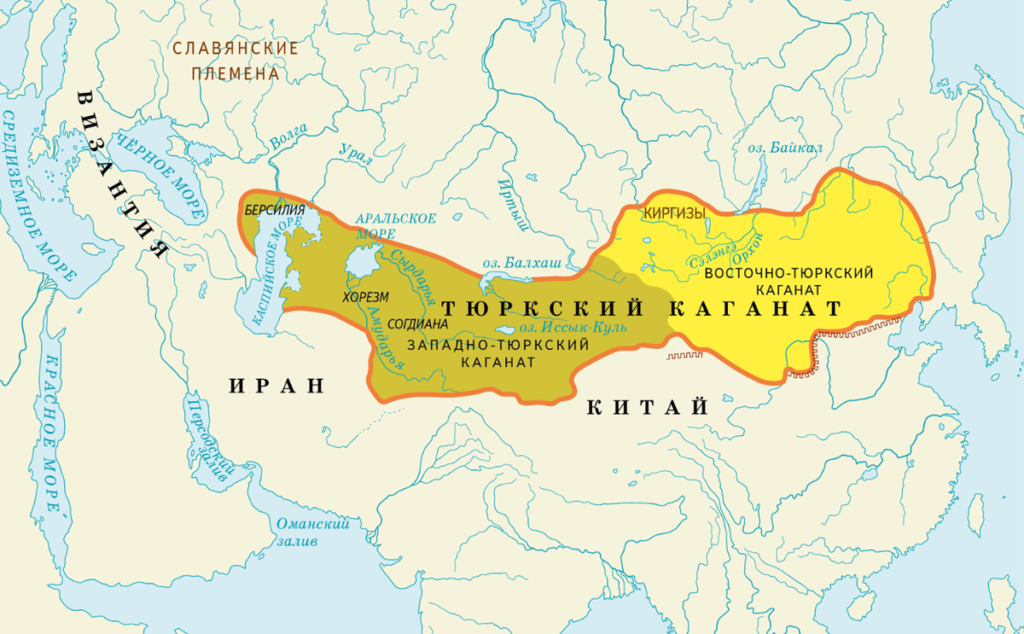In other times nomads of Iranian origin occupied half of southern Siberia. And in the east, their possessions reached what is now Western China. Not to mention their homeland and main stronghold of Central Asia, and the steppes of Eastern Europe, where they penetrated very, very early.

I saw an enemy behind that hill!
Now in all the mentioned regions live Turks. No, they did not exterminate anyone, did not root out anyone — almost every modern Turkic people has Scythian blood. Nevertheless, they assimilated the former population, which means that they surpassed it militarily, socially and culturally.
Why did the Turks defeat the Scythians, if both were pastoralists with approximately equal level of development?
There are several main reasons, which can be conditionally divided into political and material. If we talk about the former, the Scythians and their kindred groups never created a state within their steppe homeland. The maximum that their political associations reached was confederations of tribes, which disintegrated as their numbers grew.
Yes, the Scythians had their own countries, like the kingdom of Ishkuz in Transcaucasia, the Parthian Empire in Iran, the Kushan power in India and Central Asia, which existed for the sake of domination over the subjugated sedentary population. But due to the lack of strong opponents, nothing like this emerged in the steppe.

On the contrary, closely related nomadic groups such as the Huns, Turks, and Mongols had to cope with Chinese pressure, and they realized the need for unity very early on. Back in the 3rd century B.C., the Hunnu Empire appeared in the eastern steppes of Eurasia, then it was replaced by the proto-Mongol state of the Xianbi, and after that by the Zhuzhan and Turkic Kaganates and their numerous successors. One way or another, the Turkic-Mongols acted as a single force, standing above the unions of tribes. Therefore, they had an opportunity to cope with the scattered Scythians on their own with numerical and tactical advantage.
Also, we should not forget that the Scythians are a very ancient people. They entered the historical arena in the 8th century BC, almost a thousand years earlier than the Turks. Accordingly, much earlier they occupied all the suitable places for nomads and began to integrate with their neighbors, gradually settling down.
This had a positive effect on their economic development, but a negative effect on their military capabilities. Now every man was no longer a born cavalryman who grew up and lived in the saddle. On the contrary, the Turko-Mongols for a long time occupied only areas not suitable for farming and therefore retained their warlike way of life.
But they had other virtues as well. The Turks invented (or borrowed from China and improved) such important things for the steppe warrior as the stirrup, saddle and saber. Only after their appearance the concept of a cavalry warrior should be recognized as complete. Yes, this equipment had its own prehistory, but metal stirrup, wooden saddle and curved blades for the first time and practically at the same time appeared among the Turks.

Simple, but for some reason no one had figured it out
The stirrups allowed to sit more steadily on the horse, to perform destructive kopje blows. Saddles with a wooden frame allowed to redistribute the pressure on the horse’s back, as a result of which it remained healthy for a longer time and could carry the rider longer — unlike the felt or cloth cape used by the Scythians and riders all over the world. And sabers helped concentrate the blow and cut through armor in fast-paced mounted combat. All this provided significant advantages to the warriors of the ancient Turks, who in a couple of centuries took control of the entire steppe part of the Oikumene.
There is another point that is often overlooked. Steppe cavalry is predominantly light and oriented towards archery. The Sarmatians were the inventors of heavy cavalry of the shock type, but they protected their warriors mainly with horn armor, which even for their time was not considered particularly durable.
On the contrary, the ancient Turks started out as a nation of metallurgists, making military utensils for their suzerains from the Zhuzhan Kaganate. But when the dependence on the ancient Mongols was overthrown, they began to make equipment for themselves. Thus, they initially had cavalry protected by metal armor, which allowed them to withstand under fire for a long time, and if necessary — to move into close combat.

So it turned out that the Scythians were inferior to the Turks in everything, and were forced to submit or leave. Only Ossetians remained from the ancient and numerous people, who became descendants of local mountaineers and Alans, who hid from the Turks in the mountains.
